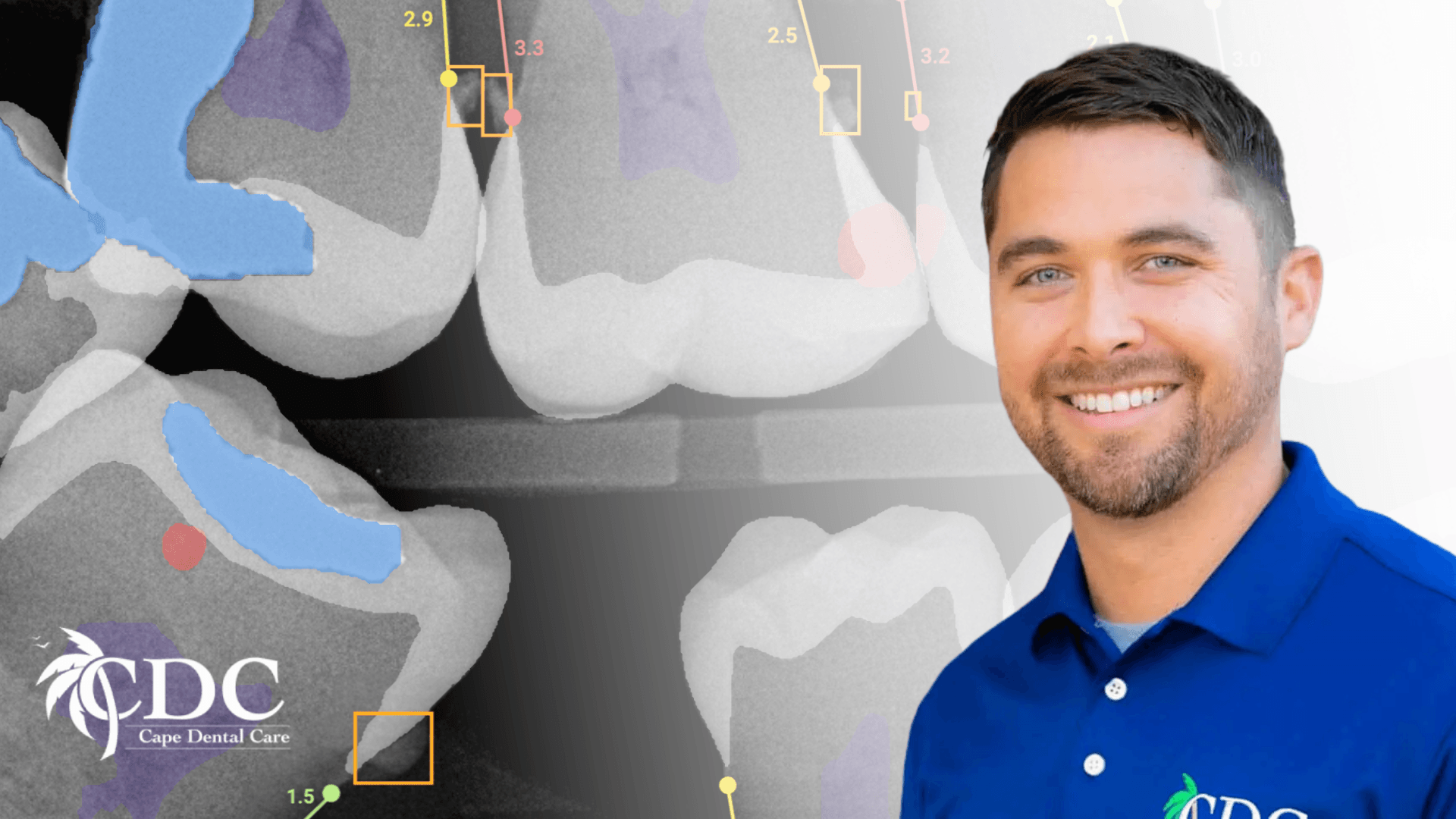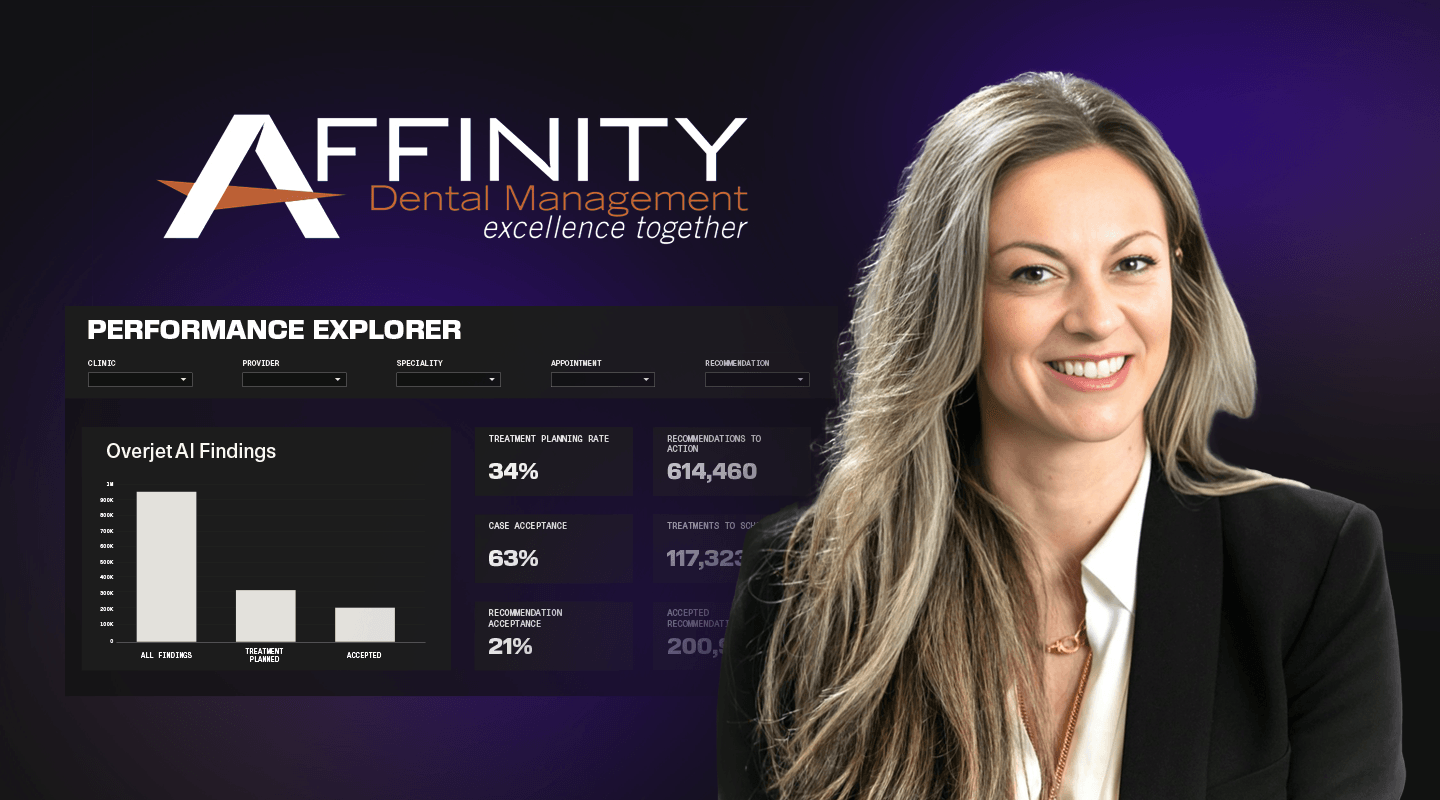When Dr. Robin Reich began practicing dentistry, she never imagined how much the technology would evolve.
“In my 36 years in dentistry, I’ve seen it all,” said Dr. Reich. “When I started, we didn’t have digital X-rays. We didn’t have scanning. We didn’t have lasers. We would send out crowns to a lab instead of milling them in-office. We had paper charts. Now I can’t imagine not converting to digital.”
During the summer of 2022, she added Overjet’s artificial intelligence for radiograph analysis in two Reich Dental Center practices in Georgia. The technology is FDA-cleared for detecting and outlining decay to make it easier to see, and quantifying bone level measurements to assist in the diagnosis of periodontal disease.
“All dentists, regardless of experience level, may at times miss decay or question whether what they see on an X-ray is decay. Overjet is a partner in that process of evaluation. Doctors want to diagnose accurately and they like having the AI findings to confirm they’ve taken a closer look at any areas of concern,” said Dr. Reich.
The Ultimate Tool for Clinical Consistency
The AI software does not diagnose; it’s a diagnostic adjunct to help dentists interpret the findings on the radiographs. Unlike human eyes, computer vision never gets tired. The AI provides the same objective findings regardless of whether it’s analyzing the image in the morning, noon, or at night.
“We have multiple providers and we want to have consistency among them,” said Dr. Reich. “Now we can make sure we’re all seeing the same findings. We may not have the same treatment plan, but it gives me comfort to know that the AI is confirming where there is decay. Even if I was a solo provider, I would use AI because it clarifies what I’m seeing. The other doctors feel the same way.”
Dr. Reich has coached many dentists during her career. In addition to owning multiple practices, she is a consultant with Fischer’s Professional Group. She is also a past President of the Georgia Dental Association and a past Chairman of the ADA Council on Communications.
“I tell dentists that you can’t lose your license by diagnosing what’s there, but you sure can if you miss it,” said Dr. Reich.
The Key to a Successful Implementation
One of the keys to successfully implementing any technology is ensuring the team understands the benefits it brings.
“I evaluate new technologies, but I don’t adopt until I’m convinced it’s equal to or better than what I already have,” said Dr. Reich. “It’s got to have value for our patients and our practice.”
When Overjet was first introduced at Reich Dental Center, some people were immediately excited while a few others were hesitant.
“Once a few of them got on board and saw the benefits, they began advocating for Overjet. When other people saw them using it with relative ease, they started using it, too. They like when Overjet confirms what they’re seeing and they can feel more confident about treating or not treating,” explained Dr. Reich.
One of the other benefits has been the patients’ reaction. The AI transforms traditional gray-scale X-rays into easy-to-understand images that are color-coded. Patients can see prior restorations in blue, decay in red or orange, and bone level measurements in red or green, depending on the severity of bone loss.
“It helps to build trust. We’re not just telling patients that something is there. Now we can clearly show them,."
What’s Next for Dental AI
Dental AI has moved beyond early adopters and is being implemented in practices across the country and around the world.
As the technology evolves, it will expand its capabilities.
“It reminds me of when the internet started,” said Dr. Reich. “It was a big deal. They had to dig up the ground and lay cable. We didn’t know all the ways it would help us. Sure enough, we use it all day, every day, in ways we couldn’t even imagine.
“I have a feeling AI will be the same way.”



